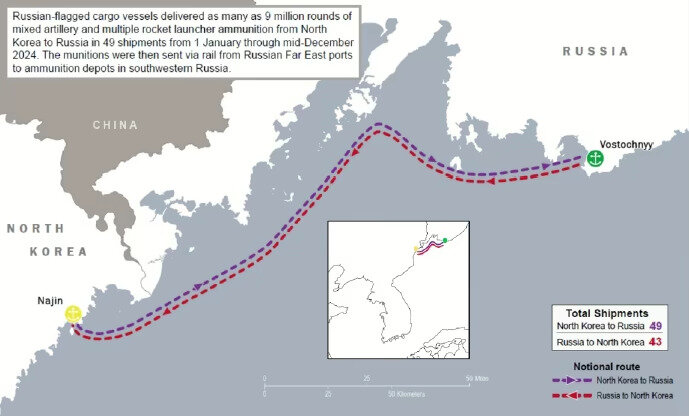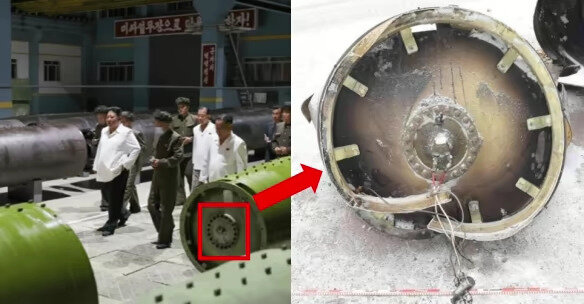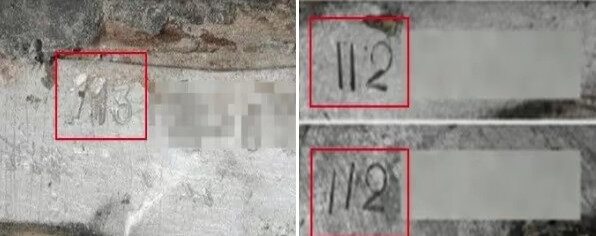Russia received 9 million shells and 100 ballistic missiles from North Korea – international report

Russia and North Korea have significantly expanded their military cooperation. In 2024 alone, Russia received up to 9 million artillery and rocket munitions as well as 100 ballistic missiles from Pyongyang. In return, North Korea was supplied with short-range air defense systems, electronic warfare systems, and at least one Pantsir system.
This is according to a report by the Multinational Sanctions Monitoring Team (MSMT), established by 11 UN member states, as cited by Ukrainska Pravda and reported by Censor.NET.
One MSMT member state stated that in 2024 alone, Russia received up to 9 million artillery and rocket munitions from North Korea, including 122mm and 152mm calibers.
The MSMT also published the route used to transport North Korean arms to Russia.
"These munitions were transported by rail from ports in Russia’s Far East to ammunition depots in the country’s southwest, where they were used by Russian forces against Ukraine," the report states.
In addition, North Korea transferred at least 100 ballistic missiles to Russia in 2024, which were later launched at targets in Ukraine.
Pyongyang also supplied Moscow with:
-
170mm long-range self-propelled artillery systems of North Korean production,
-
240mm multiple rocket launchers,
-
Over 200 units of equipment, including self-propelled guns, MLRS, and resupply vehicles for both types of weapons,
-
Anti-tank guided missiles.
According to media reports, there are signs that the accuracy of North Korean ballistic missiles is improving, thanks to data gathered from their use by Russian forces in Ukraine.
A preliminary analysis conducted in January–February 2024 found that ballistic missile debris documented in Kharkiv was of North Korean origin. The conclusion was based on distinct characteristics, including unique control nozzles, specific bolt placement around the igniter, and Korean (Hangul) markings on barometers.
During a follow-up investigation in August 2024, the Conflict Armament Research (CAR) documented debris from four more North Korean missiles, recovered in Bila Tserkva, Vitrova Balka, and Rozhivka.
One of the missiles contained a component marked with the number "113", which likely corresponds to the year 2024 in North Korea's Juche calendar, indicating that the missile was manufactured this year, the report said.
All of the missiles examined by Conflict Armament Research (CAR) were identified as Hwasong-11A or Hwasong-11B.
CAR reported that newly manufactured North Korean ballistic missiles were used against Ukraine, with minimal time between their production, transfer, and deployment.
The organization also found recently produced components of non-North Korean origin inside the missiles, indicating that North Korea continues to circumvent UN sanctions by acquiring foreign parts through third-party suppliers.
According to MSMT member states, in return, Russia supplied North Korea with air defense systems, short-range surface-to-air missile systems, electronic warfare equipment, and at least one Pantsir-class combat vehicle.
Earlier, Chief of Ukraine's Foreign Intelligence Service Oleh Ivashchenko stated that since the beginning of the full-scale invasion, Russia had received a total of six million artillery shells from North Korea.



